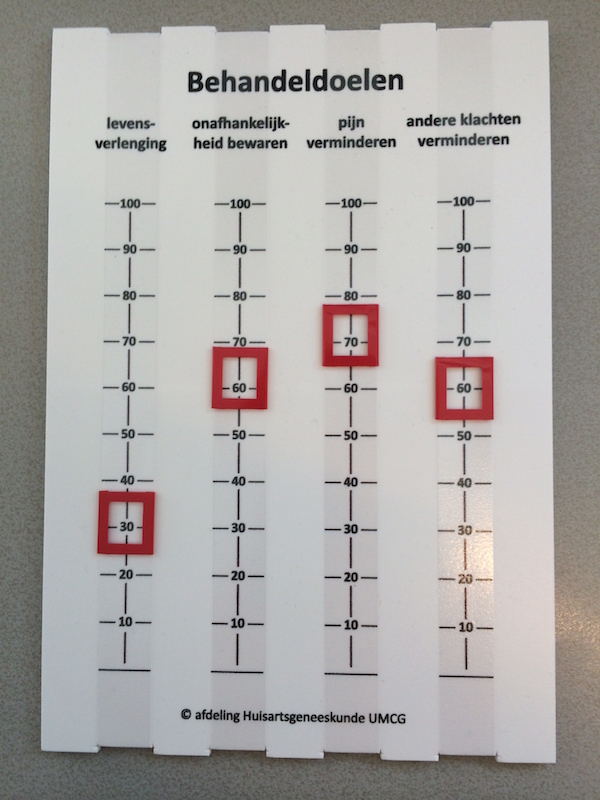OPTool explanation
The OPT (Outcome Prioritization Tool) is a conversation tool to clarify treatment goals. The OPT consists of four visual analog scales each representing a different health outcome.
- Life extension
- Preserving independence
- Reducing or eliminating pain
- Reducing or eliminating other symptoms (e.g. dizziness, fatigue, shortness of breath)
By scoring each treatment goal, the patient expresses his/her appreciation for each treatment goal. Prioritizing between these four outcomes implies that the sliders of different goals cannot be put at the same height. So, by choosing one of the outcomes as most important, the patient is willing to give up some of the others in order to get more of the most important one. The result is a ranking in which the scores and their distances represent the patient’s preferences at that time.

The OPT was developed in the United States in 20111 and then tested in the Netherlands 2. The OPT can be used by health professionals for different patient groups and several conversational situations.
Voor meer informatie over de OPT kunt u contact opnemen met Mariken Stegmann via m.e.stegmann@umcg.nl
References
- Fried TR, Tinetti M, Agostini J, Iannone L, Towle V. Health outcome prioritization to elicit preferences of older persons with multiple health conditions. Patient Educ Couns, 2011, 83, 2, 278-282
- Stegmann ME, Festen S, Brandenbarg D, Schuling J, van Leeuwen B, de Graeff P, Berendsen AJ. Using the Outcome Prioritization Tool (OPT) to assess the preferences of older patients in clinical decision-making: A review. Maturitas. 2019 Oct;128:49-52. doi: 10.1016/j.maturitas.2019.07.022. Epub 2019 Jul 30. Review.


